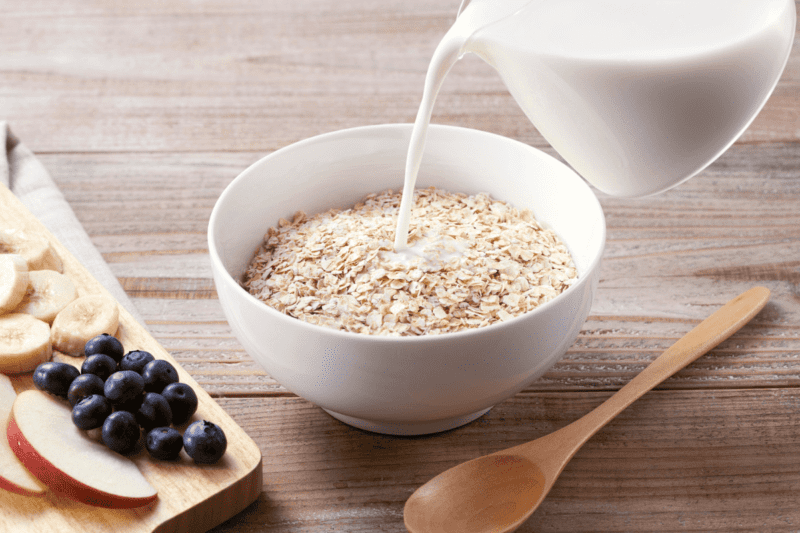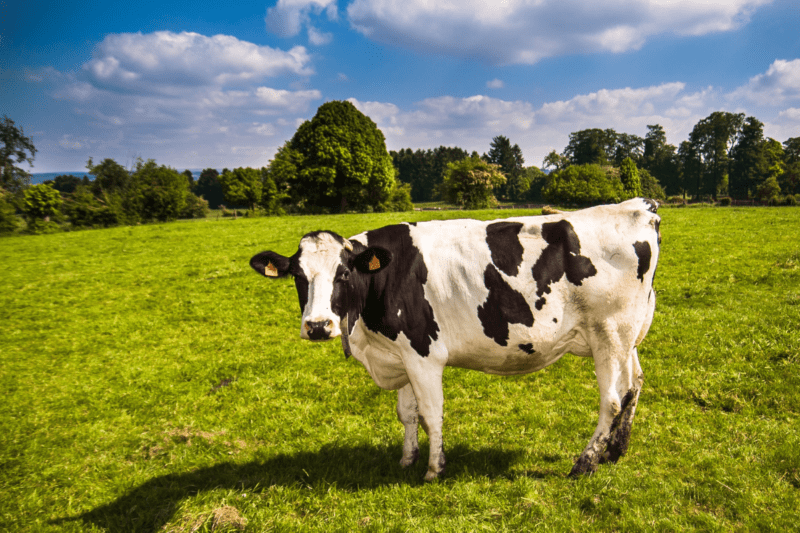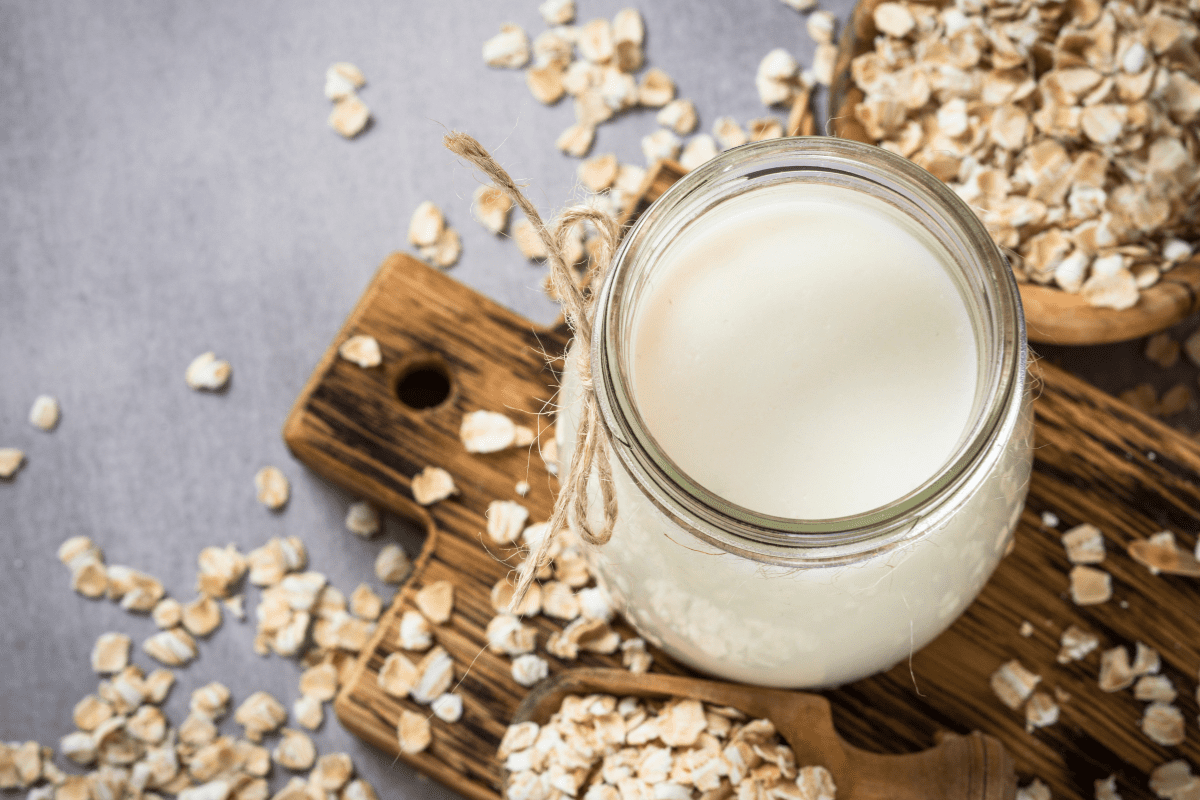As a family-owned Cornish dairy with decades of experience crafting quality Cornish dairy products, we understand that today’s shoppers face countless decisions about what goes into their trolleys. The debate between oat milk vs dairy milk has become increasingly common around kitchen tables across Cornwall and beyond.
At Trewithen Dairy, we believe every family deserves honest information to make choices that align with their values, dietary needs, and taste preferences. In this guide, we’ll explore the differences between oat milk and dairy milk, sharing insights from our generations of dairy farming expertise while respecting that every family’s journey is unique.
Whether you’re considering a switch, curious about milk alternatives, or simply wanting to understand your options better, we’re here to help you navigate these choices with confidence.
Oat Milk vs Dairy Milk: What’s in Your Glass?
Ever wondered what actually goes into that creamy white liquid in your morning cuppa or breakfast cereal? When comparing oat milk vs dairy milk, understanding their composition helps you make choices aligned with your family’s needs.
While our dairy milk flows from cow to bottle with minimal processing (other than the required pasteurisation), plant-based milks follow a different journey. Let’s peek behind the label and explore what’s really inside each type of milk, from naturally-occurring nutrients to added ingredients, so you can pour with confidence knowing exactly what’s in your glass.
Protein Content Differences
– Dairy Milk Protein
Per 100 ml, our Cornish Whole Milk, ‘Cornwall Gold Milk‘ and Cornish Semi-skimmed Milk contain 3.4 g of protein, while our Cornish Barista Milk and Cornish Skimmed Milk contain 3.5 g. Not only does milk contain a good amount of protein, but it’s high-quality protein too, providing all of the essential amino acids our body needs.
– Oat Milk Protein
Oat milk offers a respectable protein profile compared to its plant milk counterparts, though it doesn’t quite match what our dairy milk provides. With approximately 1.5 grams of protein per 100ml, the average oat milk stands somewhere in the middle of the plant-based milk spectrum – more protein than almond milk or rice milk, but noticeably less than what you’d find in a glass of our Cornish cow’s milk.
Protein Quality: Essential Amino Acids Breakdown
– Dairy Milk Amino Acids
Our Cornish dairy milk is a complete protein powerhouse. Cow’s milk delivers all nine essential amino acids your body needs but cannot produce itself. This includes optimal levels of leucine for muscle recovery, lysine for immune function, and tryptophan for mood regulation. The protein in our milk has a high biological value score of 0.9-1.0, meaning nearly all of it can be utilised by your body, making it nature’s perfect protein package.
– Oat Milk Amino Acids
While oat milk contains protein, its amino acid profile is incomplete when compared to dairy. Oat milk is particularly low in the essential amino acids lysine and methionine. Most commercial oat milks provide adequate amounts of phenylalanine and histidine, but fall short on the branched-chain amino acids (leucine, isoleucine, and valine) that support muscle maintenance. For families choosing oat milk, pairing it with complementary protein sources helps ensure you’re getting the full spectrum of essential amino acids your body requires.
Vitamins and Minerals Profile
– Dairy Milk Vitamins and Minerals
Our Cornish cows’ milk comes naturally filled with an impressive array of nutrients. Each glass delivers significant amounts of calcium (around 120mg per 100ml) that’s highly bioavailable, meaning your body can readily absorb and use it. You’ll also find naturally occurring vitamin B12 essential for nerve function, phosphorus for energy release, potassium for heart health, and iodine for thyroid function. Our milk provides vitamin A, riboflavin (B2), and vitamin D (especially in whole milk), making it a nutrient-dense milk option with no fortification needed.
– Oat Milk Vitamins and Minerals
Oat milk naturally contains some minerals like iron and manganese, but in its unfortified state, it lacks many essential nutrients found in dairy milk. Most commercial oat milks are fortified to address these gaps, commonly adding calcium (usually as calcium carbonate), vitamins A, D, B12, and riboflavin. The bioavailability of these added nutrients can vary, particularly calcium, which may not be absorbed as efficiently as the naturally occurring calcium in dairy milk. We recommend families check labelling to ensure you’re getting the vitamins and minerals you need from different sources.

Is Dairy Milk or Oat Milk Healthier?
The question of which milk is “healthier” isn’t as straightforward as we might wish. When comparing dairy milk vs oat milk, you’ll find that both types of milk offer distinct nutritional profiles and potential benefits, making the “healthiest” choice dependent on your family’s specific needs and preferences. Let’s explore what each brings to the table.
Benefits of Dairy Milk
Our Cornish dairy milk shines as a natural, complete food that’s been nourishing families for generations. The nutritional advantages are compelling:
- Dairy milk delivers complete protein with all essential amino acids in one convenient package.
- Cows’ milk is a calcium and vitamin powerhouse, with superior absorption compared to fortified alternatives
- The naturally occurring vitamin B12 in dairy supports neurological function and energy production, particularly valuable as B12 is primarily found in animal products.
- For growing children, dairy milk provides the ideal combination of protein, fat, and micronutrients to support healthy development without the need for extensive fortification.
- Recent research even suggests moderate consumption of full-fat dairy may have cardiovascular benefits, challenging older assumptions about dairy fats.
- Cows’ milk has no added sugar, unlike some oat milk and other plant-based milk alternatives.
Potential Benefits of Oat Milk vs Dairy
In the UK, surveys suggest one-quarter of adults now drink some non-dairy milks (although not always exclusively). For families with specific health concerns or dietary restrictions, these benefits of drinking oat milk may outweigh the nutritional trade-offs:
- For those with dairy allergies or lactose intolerance, oat milk provides a digestible alternative that still delivers a creamy texture in hot drinks and cereal.
- Oat milk has naturally occurring beta-glucans (a type of soluble fibre) that may help manage cholesterol levels and support heart health when consumed as part of a balanced diet.
- Environmentally conscious families may appreciate oat milk’s generally lower carbon emissions compared to dairy production, though sustainable farming practices (like those we employ at Trewithen) can significantly narrow the carbon footprint gap.
- Oat milk also offers versatility for those following plant-based or vegan diets, providing a milk-like experience without animal products.
What the Nutritionists Say About Dairy vs Oat Milk
Registered nutritionists and dietitians typically emphasise that both milk types can be part of a healthy diet – the key is understanding their differences and making informed choices.
Many nutrition professionals note that dairy milk’s naturally complete nutritional package makes it particularly valuable during developmental years and for bone health throughout life. Dietitians often point out that while fortified oat milk attempts to replicate dairy’s nutrient profile, the bioavailability of added nutrients in plant-based milk substitutes doesn’t always match what nature provides.
The expert consensus suggests that rather than declaring one milk “healthier” than the other, families should consider their specific nutritional needs, any allergies or intolerances, environmental values, taste preferences, and budget constraints when making their choice.
What matters most is that your family’s overall diet provides all the nutrients needed for health and well-being, whether that includes dairy milk, oat milk, or a combination of both.

The Taste Test: Flavour and Versatility
When it comes to choosing between dairy milk and oat milk, how it performs in your kitchen matters just as much as nutritional considerations. Let’s explore how these two options compare when it comes to taste, texture, and culinary applications.
– The Culinary Properties of Cows’ Milk
Our Cornish dairy milk offers a naturally sweet, rounded flavour profile that generations have come to love. The creamy mouthfeel, particularly in our whole milk, carries subtle notes that reflect our cows’ grass-rich diet on Cornwall’s lush pastures. This natural complexity makes dairy milk incredibly versatile in the kitchen, and it’s equally at home in your morning smoothie, afternoon tea, or scrumptious bakes.
In cooking, dairy milk’s protein structure creates magic. It caramelises beautifully when reduced for sauces, creates silky custard, and produces perfectly fluffy textures in baked goods. The natural sugars in milk (lactose) contribute to golden browning in everything from pancakes to Yorkshire puddings.
Coffee enthusiasts particularly appreciate our Barista Milk, which steams to create microfoam that not only tastes delicious but holds latte art beautifully. The proteins in dairy milk bind with coffee compounds to smooth out any bitterness while enhancing coffee’s complex flavours – a relationship perfected over centuries of coffee culture.
– Oat Milk’s Culinary Uses
Oat milk brings its own distinctive character to the table, with a naturally sweet, cereal-like flavour that many find appealing. Its subtle oaty notes can complement breakfast foods particularly well, and its sweetness often means less added sugar is needed in recipes. The mouthfeel tends to be creamy and slightly thicker than some other plant milks, making it one of the closest plant-based approximations to dairy’s texture.
In the kitchen, oat milk has earned its reputation as perhaps the most versatile of plant milks. Its higher carbohydrate content helps it withstand high temperatures without separating, making it suitable for cooking sauces and soups. The natural starch content gives oat milk a slight thickening quality that works well in creamy dishes, though it won’t provide the same protein-driven structure as dairy in baked goods.
Both milks shine in different culinary contexts – dairy milk excels in traditional techniques where protein behaviour matters, and oat milk offers a plant-based alternative that performs admirably across many (though not all) applications.
Many families find that keeping both options in the fridge gives them the flexibility to choose the right milk for each specific use, whether that’s dairy milk for your cheese sauce or oat milk for your morning smoothie.
Oat vs Dairy: Making the Right Choice for Your Household
When comparing oat milk vs dairy milk, the best choice ultimately depends on your family’s specific circumstances rather than following general trends. Consider your household’s unique blend of nutritional needs, taste preferences, ethical values, and practical concerns to find your perfect match.
Considerations Beyond Nutrition
Your family’s decision of whether to choose oat milk vs dairy milk extends far beyond calcium and protein counts. More than ever in this day and age, budget matters – dairy milk typically delivers more nutrition per pound spent, while oat milk commands a premium price.
Dietary restrictions may necessitate alternatives for those with lactose intolerance or dairy allergies. Environmental values play a role too; while plant milks generally have lower carbon footprints, our Cornish dairy practices prioritise sustainability through regenerative farming and local sourcing. Convenience factors in as well – UHT oat milk offers pantry storage, while fresh dairy milk requires refrigeration but rewards with superior taste and nutrition.
Conclusion
At Trewithen Dairy, we’re passionate about milk, but most importantly, we’re committed to helping Cornish families make choices that work for their unique needs. The oat milk vs dairy milk conversation isn’t about declaring a universal winner – it’s about finding what nourishes your family both nutritionally and emotionally.
Whether you choose our farm-fresh dairy milk with its complete nutritional package, opt for oat alternatives for specific dietary needs, or keep both in your fridge for different purposes, the best choice is always an informed one.
We’ll continue crafting quality dairy products that the whole family loves. After all, what matters most isn’t what’s trendy, but what brings health and happiness to your kitchen table.
Oat Milk Vs Dairy Milk- FAQs
Q: Why are some people returning to dairy after trying oat milk?
Some consumers are returning to cow’s milk because they’re getting wise to the fact that there are additives like texturisers in many plant-based alternatives and they want to return to nature. Dairy milk offers naturally occurring protein and calcium, which is appealing to health-conscious consumers. The trend reflects a broader consumer movement toward less processed foods.
Q: Is oat milk or dairy milk better for children?
Dairy milk naturally provides the complete protein, calcium, and vitamin package growing children need, making it nutritionally superior unless there are specific allergies or intolerances. If choosing oat milk for children, ensure it’s fortified and consider additional protein sources in their diet.
Q: Can I use oat milk and dairy milk interchangeably in recipes?
While oat milk works well in many recipes, results may vary in dishes where dairy milk’s protein structure is essential, like traditional cheese sauces or custards. Oat milk shines in coffee drinks and simpler cooking applications, while dairy milk generally offers more versatility across all culinary techniques.
Q: Is dairy milk or oat milk more environmentally friendly?
The environmental impact comparison is nuanced. While plant milks generally have lower carbon footprints, sustainable dairy practices like ours at Trewithen significantly reduce this gap. Our local production, regenerative farming methods, and commitment to animal welfare create a more environmentally responsible dairy option than mass-produced alternatives.
Q: Does oat milk contain added sugars?
Many commercial oat milks contain added sugars to enhance flavour, though unsweetened varieties are available. Our dairy milk contains only naturally occurring lactose with no added sugars. Always check labels, as sugar content can vary significantly between brands and varieties.
Q: Which milk is better for weight management?
Neither milk is inherently “better” for weight management. Skimmed dairy milk offers high protein with minimal fat, while unsweetened oat milk is naturally lower in calories. The best choice depends on your overall diet and nutritional needs rather than any single food choice.
